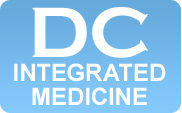What is a D.O.
Osteopathic medicine is a distinct form of medical practice in the United States, providing all the benefits of modern medicine, including prescription drugs, surgery, and technology to diagnose disease and evaluate injury. It also offers the added benefit of hands-on diagnosis and treatment through a therapy system known as Osteopathic Manipulative Medicine. It emphasizes helping each person achieve a high level of wellness by focusing on health promotion and disease prevention.

The History of Osteopathic Medicine
Osteopathic medicine was founded in the late 1800s in Kirksville, Missouri, by a medical doctor who recognized that the medical practices of the day often caused more harm than good. He focused on developing a medical care system promoting the body's innate healing ability. He called this system of medicine osteopathy, now known as osteopathic medicine.
Medical Care Partnerships
Osteopathic physicians, also known as DOs, partner with their patients. They consider the impact that lifestyle and community have on everyone’s health, and they work to break down barriers to good health. DOs are licensed to practice the full scope of medicine in all 50 states. They practice in all types of environments and all kinds of specialties.
A Holistic Centric Approach
DOs are trained to look at the whole person from their first days of medical school, which means they see each person as more than just a collection of organ systems and body parts that may become injured or diseased. This holistic approach to patient care means that osteopathic medical students learn to integrate the patient into the healthcare process as partners. They are trained to communicate with people from diverse backgrounds, and they get the opportunity to practice these skills in their classrooms and learning laboratories, frequently with standardized and simulated patients.
The osteopathic medical profession has a proud heritage of producing primary care practitioners. The mission statements of most osteopathic medical schools state plainly that their purpose is the production of primary care physicians. Osteopathic medical tradition preaches that a strong foundation in primary care makes one a better physician, regardless of what specialty they may eventually practice.

Osteopathic Education
In addition to studying all the typical subjects you would expect student physicians to master, osteopathic medical students take approximately 200 additional hours of training in the art of osteopathic manipulative medicine. This system of hands-on techniques helps alleviate pain, restore motion, support the body's natural functions, and influence the body's structure to allow it to function more efficiently.
One key concept that osteopathic medical students learn is that structure influence’s function. Thus, if there is a problem in one part of the body's structure, function in that area and possibly in others may be affected.
Restoring Health
Another integral tenet of osteopathic medicine is the body's innate healing ability. Many of osteopathic medicine's manipulative techniques aim to reduce or eliminate impediments to proper structure and function so the self-healing mechanism can assume its role in restoring a person to health.
You can count on us for quality care – call our trusted medical team at 888-593-1009.





